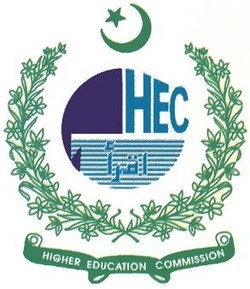Islamic Influences on the Logos of Educational and Banking Sectors in Pakistan
DOI:
https://doi.org/10.53762/alqamar.05.01.e02Keywords:
Islamic Influences, Islamic Scripts, Branding, Logo Design, PakistanAbstract
Visual Communication is a strong tool to represent the corporate identity. Logo design is the second important thing in branding. Religion Islam encourages us to mark identity to our belongings, individuals, and goods. In this account Prophet Muhammad (s.a.w) set the examples in his life. Pakistan is the second-largest Islamic country and Islamic history leaves an impression on the branding strategies. This research paper will discuss the logo design of Pakistan. Further will study the strategy of companies in the selection of symbols, icons, typography for the emblem, and wordmark of the logo. To analyze the data Content Analysis methodology has been used for this paper, in which logos of the educational sector and banking sector has been selected. Data was collected from secondary sources like official websites and prior research. The study indicates that how Islamic roots of all Islamic countries are connected and follow the Islamic symbols, icons, scripts, and colours to communicate with the consumers.
References
Raul Pant, “Visual Marketing”, Business 2 Community, last modified on 16 January 2015, http://www.business2community.com/digital-marketing/visual-marketing-pictures-worth-60000-words-01126256.
Tom Peter, The Brand You (New York: Alfred A. Knopf, Inc., 1999), 41.
Paul A. Bottomley, and John R. Doyle, “The interactive effects of colors and products on perceptions of brand logo appropriateness”, Journal of Marketing Theory 6, no. 1 (2006): 63-83.
Sanjoy M. Som, “Common Identity as a Step to Civilization Longevity”, Futures the Journal of policy, planning and futures studies 106, no. 2 (2019): 37-43.
Alina Wheeler, Designing Brand Identity (New Jersey: John Wiley & Sons, Inc., 2017), 14.
Marilynn B. Brewer, Ingroup Identification, and Intergroup Conflict (New York: Oxford University Press, 2001), 56.
John Tomlinson, The Global Transformations Reader (Cambridge: Blackwell Publications, 2003), 50.
Kenneth W. Terhune, “Nationalism among foreign and American students: An exploratory study”, Journal of Conflict Resolution 8, no. 3 (1964): 256-270.
Alina Wheeler, Designing Brand Identity (New Jersey: John Wiley & Sons, Inc., 2017), 51.
Mosarrat Farhan, “Brand Elements Lead to Brand Equity: Differentiate or Die”, Journal of Information Management and Businiess Review 4, no.4 (2012): 223-233.
Eshley Jackson, “11 Types of Logo Design”, Design Hill, last modified on 30 September 2021, https://www.designhill.com/design-blog/types-of-logos-and-how-to-use-them/ (accessed on 2 November 2021).
Jean-Eric Pelet, Panagiota Padadopoulou, “Investigating the Effect of Colour on Memorization and Trustin E-Learning: The Case of KMCMS.net (Knowledge Management and Content ManagementSystem)”, in The Impact of E-Business Technologies on Public and Private organizations: Industry Comparisons and Perspectives, ed. Ozlem Bak, Nola Stair (Hershey, New York: Jsiness Science Reference, 2011), 52-78.
Dr. Rik Riezebos, Brand Management, A theoretical and practical approach (United Kingdome: Person, 2003) 331.
Ibn Aseer, Asadul Ghaba Fi Mu’arifat-is-Sahabah (Beirut: Dar Ahy’-is-Turath Al-Arabi, 1996) 49.
Al-Muttaqi, 1965, p. 2.
Ibn Aseer, Asadul Ghaba Fi Mu’arifat-is-Sahabah (Beirut: Dar Ahy’-is-Turath Al-Arabi, 1996) 880.
Sahih al-Bukhari, Al-Kutub-us-Sittah: Shahih Bukhari (Riyadh: Darussalam lin Nashri-wat-Tawzi, 1999) 183.
Sahih al-Bukhari, Al-Kutub-us-Sittah: Shahih Bukhari, 587.
Sahih al-Bukhari, Al-Kutub-us-Sittah: Shahih Bukhari, 500.
Yusuf Al-Qaradawi, The Lawful and the Prohibited in Islam (Al-Halal Wal Haram Fil Islam) (Indiana: American Trust Publications, 1994) 102.
Sahih al-Bukhari, Al-Kutub-us-Sittah: Shahih Bukhari (Riyadh: Darussalam lin Nashri-wat-Tawzi, 1999) 183.
Shiomi, “The National Emblem of Saudi Arabia”, Gary Wolff, https://www.garyjwolff.com/the-national-emblem-of-saudi-arabia.html (accessed on 3 November 2021).
Whitney Smith, "flag of Pakistan." Encyclopedia Britannica, November 13, 2018. https://www.britannica.com/topic/flag-of-Pakistan.
Sana Arz Bhutto, Dr. Farooq Aziz, “The Banking Sector of Pakistan: The Case of Its Growth and Impact on Revenue Generation 2007 to 2012”, Journal of Economics and Finance 1, no. 5 (2013): 46-50.
Anonymous, “Top Universities in Pakistan”, HEC, last modified on 2021, https://www.4icu.org/pk/ (accessed on 03 November 2021).
Jong Woo Jun, Hyung-Seok Lee, “Cultural Differences in Brand Designs and Tagline Appeals”, Journal of International Marketing Review 24, no. 4 (2007): 474-491.
Leyland Pitt, Robert Ankomah Opoku, Magnus Hultman, Russell Abratt, Stavroula Spyropoulou, “What I say about myself: communication of brand personality by African countries”, Journal of Tourism Management 28, no. 3 (2007): 835-844.
Rafiq Elmansy, “Arabic Calligraphy-Taking A Closer Look”, Smashing Magazine Blog, last modified on 20 March 2014, https://www.smashingmagazine.com/2014/03/taking-a-closer-look-at-arabic-calligraphy/ (accessed on 04 November 2021).
Rafiq Elmansy, “Arabic Calligraphy-Taking A Closer Look”, Smashing Magazine Blog. last modified on 20 March 2014, https://www.smashingmagazine.com/2014/03/taking-a-closer-look-at-arabic-calligraphy/ (accessed on 04 November 2021).
Anonymous, Riq’a Script, Arabic Calligraphy, https://www.arabic-calligraphy.com/arabic-calligraphy-styles/reqaa-script/ (accessed on 04 November 2021).
Published
How to Cite
Issue
Section
Copyright (c) 2022 Al-Qamar

This work is licensed under a Creative Commons Attribution 4.0 International License.


















